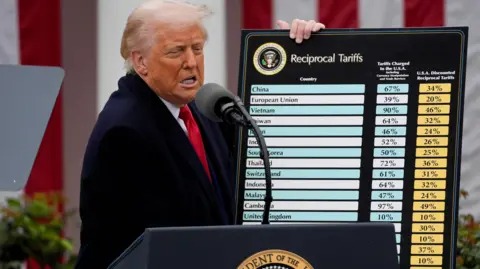Tariffs—taxes placed on imported goods—are increasingly back in the spotlight as major economies shift from relatively open trade regimes toward more protectionist stances Tariff News. Recent moves show tensions between free‑trade principles and geopolitical or domestic‑industry pressures. The story is dynamic, with impacts felt across supply chains, consumers, national budgets and global growth.
Key Recent Developments
U.S. tariff policy under scrutiny
The Donald Trump administration has pushed a broad and aggressive tariff agenda:
-
The U.S. Supreme Court has raised serious questions about the legality of the administration’s use of the International Emergency Economic Powers Act (IEEPA) to impose sweeping tariffs. Reuters+2AP News+2
-
The administration argues tariffs are regulatory rather than purely revenue‑raising, an argument challenged by the Court. The Washington Post+1
-
Tariff threats and letters to dozens of countries signal a willingness to use import taxes as leverage in trade negotiations. The Economic Times+2AInvest+2
Global response and ripple effects
-
Countries such as Canada, Mexico, China and several in Asia are on the frontline of retaliatory or defensive trade policy responses. For example, China has expressed willingness to deepen trade and investment discussions with the European Union as global uncertainty rises. Reuters+2Wikipedia+2
-
The impact is measurable: The Organization for Economic Co‑operation and Development (OECD) estimates that rising tariffs could push global inflation higher and reduce real incomes, while slowing growth. mint+2Business Standard+2
-
Export‑oriented industries in emerging economies are under pressure—for example, India’s seafood exporters are explicitly citing U.S. tariffs as a headwind. The Times of India
Why This Matters
Economic growth and inflation risk
Tariffs increase the cost of imported goods, which in turn raises consumer prices or forces businesses to absorb higher costs. The OECD warns that an increase of 10 percentage points in tariffs could reduce global output by roughly 0.3 % in subsequent years. mint+1
Moreover, the slowdown in trade and investment leads to weaker growth trajectories— for example, South Asia’s growth outlook has been cut due in part to tariff pressures from the U.S. Business Standard
Supply‑chain and business disruption
Multinational corporations face higher input costs, disrupted sourcing decisions, and uncertainty in planning. Trade flows get redirected, sometimes away from the tariff‑imposing country or into less efficient routes. The academic literature shows that tariffs reshape trade networks, hurting both the imposing country and trade partners. arXiv
Geopolitical implications
Tariffs are no longer purely economic tools—they’re becoming geopolitical weapons. For instance, in Southeast Asia the U.S. is embedding “poison pill” clauses in trade pacts to influence alignment vis‑à‑vis China. Financial Times
Also, the legal challenge in the U.S. Supreme Court isn’t just about trade—it’s about the scope of executive power. The decision will have ramifications beyond trade policy. AP News
Local industry and consumer impacts
On the domestic front, governments argue tariffs protect strategic or vulnerable industries (e.g., steel, aluminium). But consumers often bear the cost via higher prices, and companies face uncertain investment climates. For example, steel and aluminium tariffs in the U.S. were reinstated on national‑security grounds in early 2025. European Parliament+1
What to Watch Going Forward
Here are several aspects to keep an eye on:
-
Legal outcomes: The Supreme Court’s decision on the IEEPA’s use for tariffs will set a precedent for how far the executive branch can go in trade policy.
-
Trade negotiations: Many of the threats of tariffs are tied to trade talks. Whether countries accept renegotiated deals or push back will matter.
-
Retaliation and trade wars: If tariff escalation continues, broader trade wars may emerge (with more‑countries, more‑products), which could deepen global economic damage.
-
Impact on emerging economies: Countries that rely heavily on exports to major markets may be disproportionately affected. Diversification of markets and value‑addition are key mitigations.
-
Supply chains & business strategy: Companies may accelerate reshoring, diversification of suppliers, or increased automation to hedge against tariff risk.
-
Consumer prices and inflation: Higher tariffs raise costs. Central banks may react by delaying cuts or tightening more. The inflation‑growth trade‑off becomes tougher.
-
Change in political economy: Tariffs influence politics—labour markets, regional industries, and bargaining power shift. Voters and industries may push for more aggressive protectionism or for liberalisation depending on outcomes.
Implications for Pakistan & South Asia
Since you’re located in Pakistan, here are some region‑specific reflections:
-
Exporters in Pakistan should watch global tariff developments carefully—especially if Pakistan exports to the U.S., EU or China. A rise in tariffs globally means more competition, and domestic industries may face increased pressure.
-
Market diversification is even more important: If one major market tightens, having access to alternate destinations helps mitigate risk (as seen in India’s seafood sector pivoting to Asia). The Times of India
-
Regional trade agreements may gain more importance. If major powers shift toward bilateral deals or exclude certain countries, South Asian countries may need to negotiate rapidly to avoid being left out.
-
Domestic inflation risk: If tariffs raise global costs, they may feed into import‑prices in Pakistan (for inputs, machinery, components). That may drive inflation and challenge macro stability.
-
Policy responses: Authorities may need to support local industries (through subsidies, training, value‑addition) and encourage export‑oriented sectors to move up the value chain (rather than commodity exports) to withstand tariff headwinds.
Conclusion
Tariff policy is again a front‑line tool in the interplay of economics, politics and strategic rivalry. The recent surge in unilateral tariffs, threats to key trade‑partners, and legal challenges underline how unsettled the global trade framework now is. For businesses, consumers, governments and exporters—uncertainty is high.
